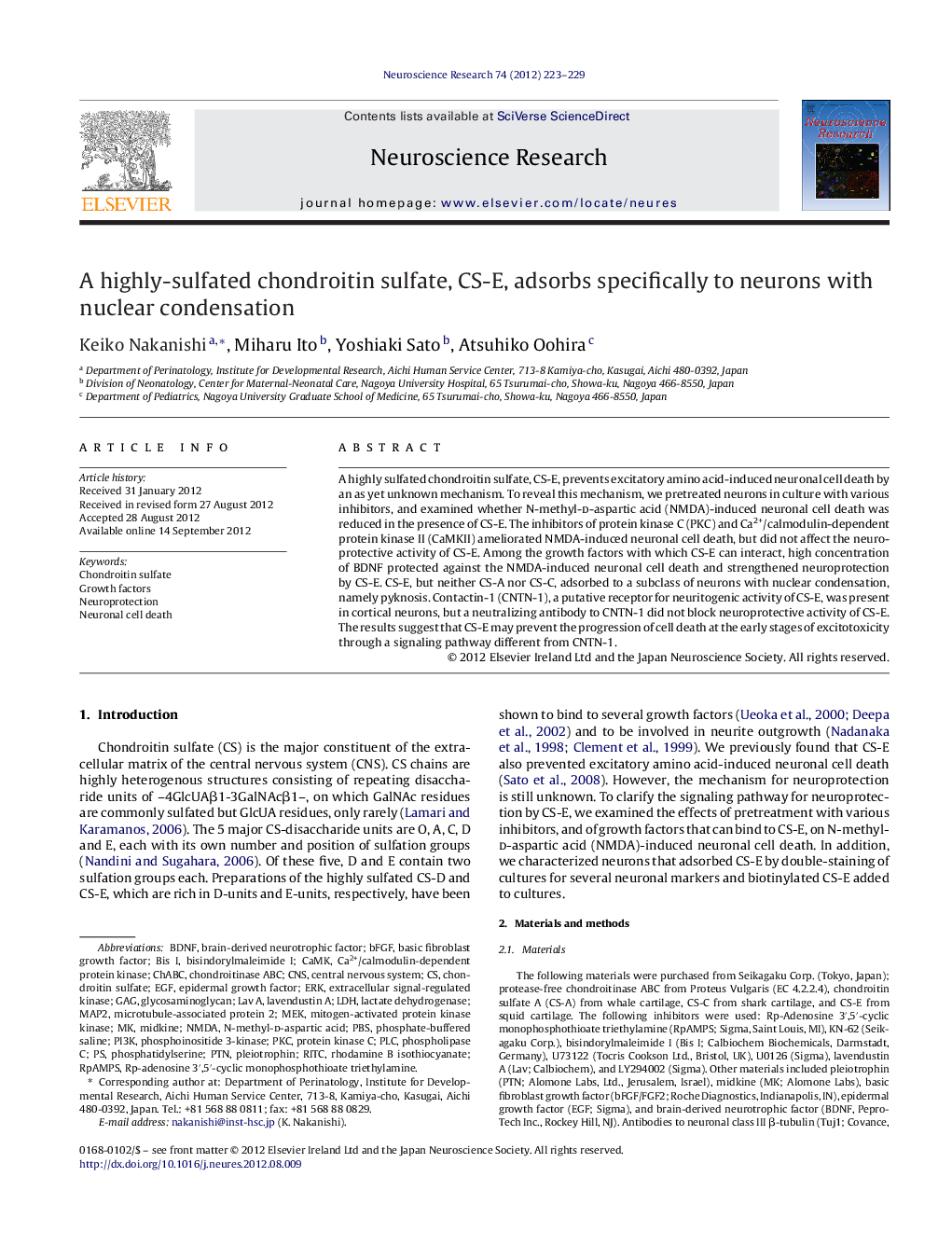| Article ID | Journal | Published Year | Pages | File Type |
|---|---|---|---|---|
| 4351581 | Neuroscience Research | 2012 | 7 Pages |
A highly sulfated chondroitin sulfate, CS-E, prevents excitatory amino acid-induced neuronal cell death by an as yet unknown mechanism. To reveal this mechanism, we pretreated neurons in culture with various inhibitors, and examined whether N-methyl-d-aspartic acid (NMDA)-induced neuronal cell death was reduced in the presence of CS-E. The inhibitors of protein kinase C (PKC) and Ca2+/calmodulin-dependent protein kinase II (CaMKII) ameliorated NMDA-induced neuronal cell death, but did not affect the neuroprotective activity of CS-E. Among the growth factors with which CS-E can interact, high concentration of BDNF protected against the NMDA-induced neuronal cell death and strengthened neuroprotection by CS-E. CS-E, but neither CS-A nor CS-C, adsorbed to a subclass of neurons with nuclear condensation, namely pyknosis. Contactin-1 (CNTN-1), a putative receptor for neuritogenic activity of CS-E, was present in cortical neurons, but a neutralizing antibody to CNTN-1 did not block neuroprotective activity of CS-E. The results suggest that CS-E may prevent the progression of cell death at the early stages of excitotoxicity through a signaling pathway different from CNTN-1.
► We examined neuroprotective effects of CS-E, a highly sulfated chondroitin sulfate. ► BDNF prevented NMDA-induced excitotoxicity and enhanced the neuroprotection by CS-E. ► CS-E, but neither CS-A nor CS-C, adsorbed to neurons with nuclear condensation. ► A neutralizing antibody to CNTN-1 did not affect the neuroprotection by CS-E. ► CS-E protects neurons with a different signaling pathway from CNTN-1.
